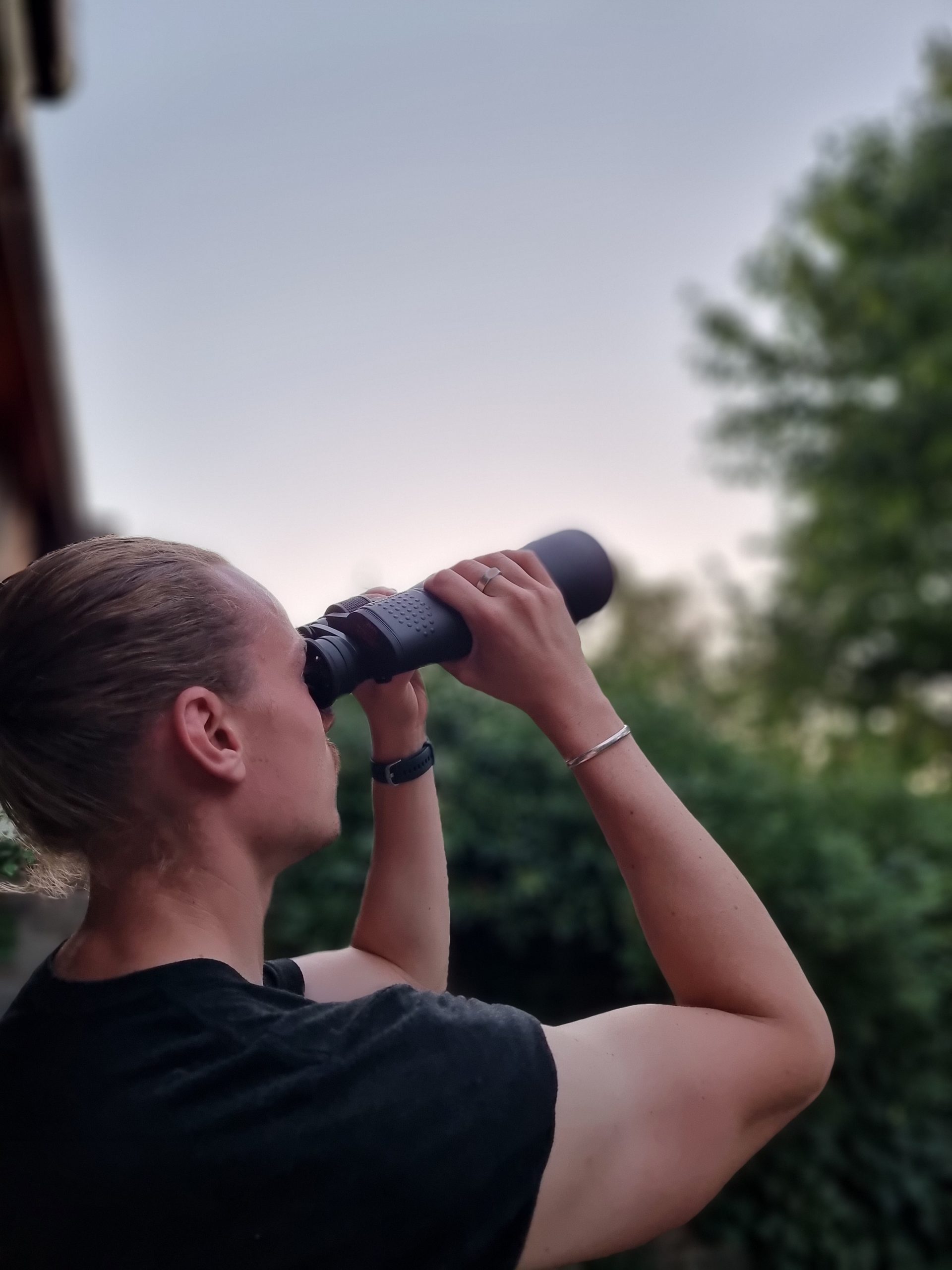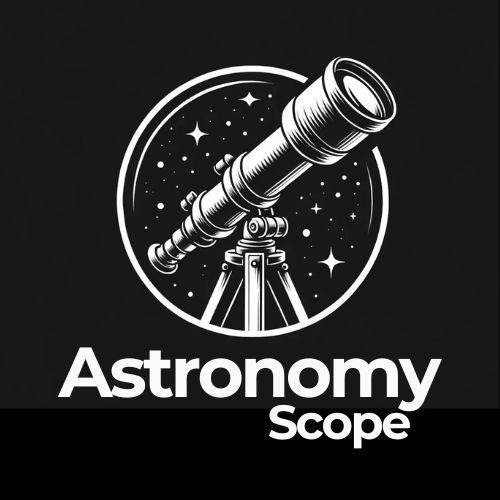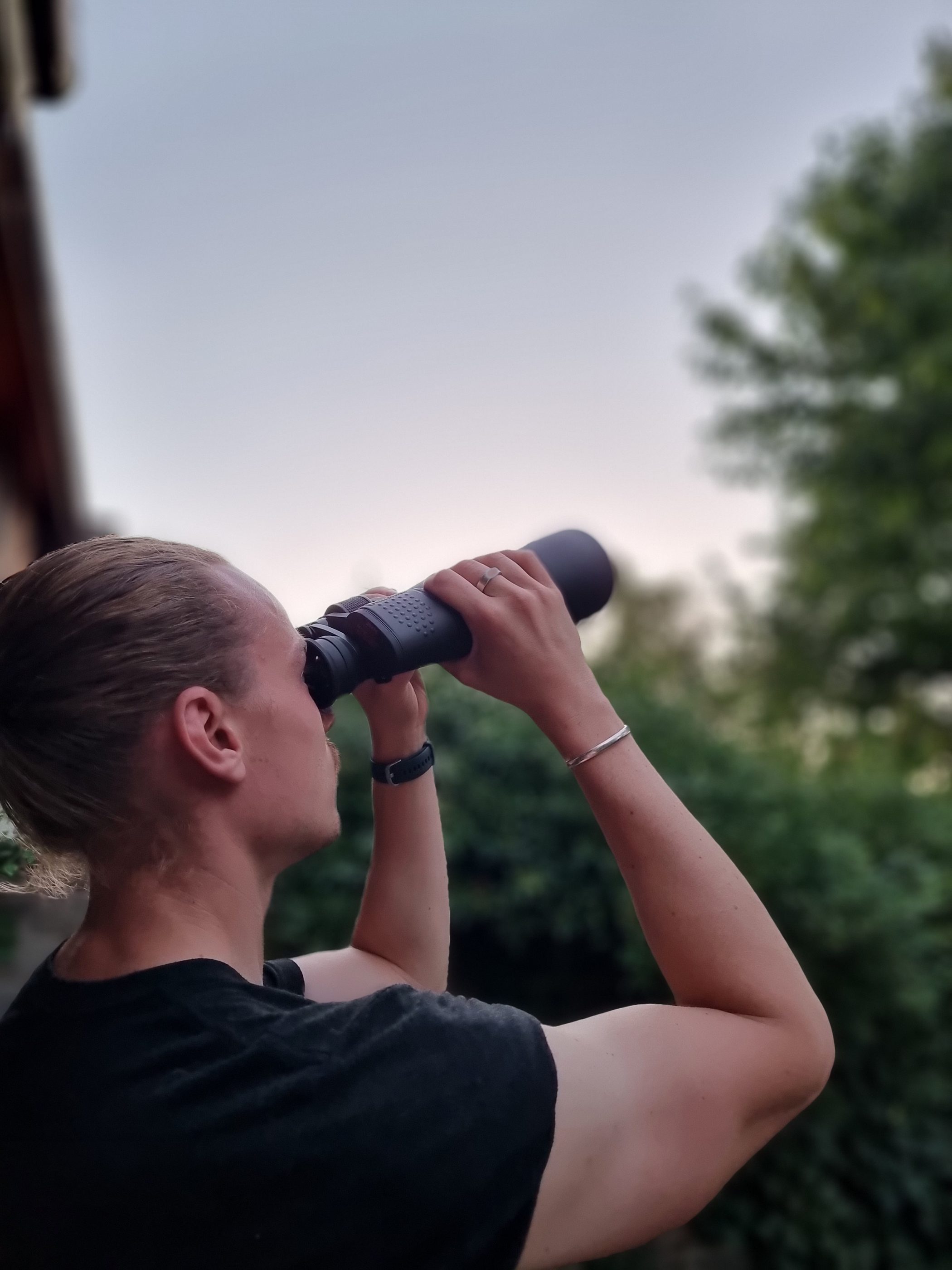Are you looking at Celestron SkyMaster Binoculars but are not quite sure which model to get? If you want to compare models side by side, this 12×60 vs 15×70 comparison guide is here to help.
If you are in a rush and want a quick overview of which is best, here it is:
Celestron SkyMaster 12×60 vs 15×70




The entire Celestron SkyMaster Range is well-constructed, designed, reputable, and reasonably priced binoculars that are built with great optics when compared to other makes and brands in the same price range. They have Porro Prisms, Environmental Protection, are Tripod Adaptable and the lenses are fully multi-coated making them a great investment.
Regarding these specific models, the main difference between the 12×60’s and the 15×70’s is both the magnification and the aperture (light gathering ability). The 15×70’s come out on top for both in this regard – with more magnification and the ability to collect more light. Beyond this, the 15×70s also have superior eye relief so may be more suitable for eyeglass wearers.
However, the 12×60s have a larger field of view (to see more of the sky at any one time) and are typically lighter so are better for holding for longer periods of time and for transporting. Ultimately what is best for you depends on how you want to use them and your own personal preferences.
View the 12×60 SkyMaster Reviews on Amazon | View the 15×70 SkyMaster Reviews on Amazon
Comparing The Specification of Each Model
The above table lets you compare side by side where each model differs and may be preferable.
You may now be wondering what do these terms and measurements actually mean. Let us know quickly run through each of the above.
Prisms
Prisms are the component in a pair of binoculars that rectify an inverted (upside down back to front) image projected by the objective.
So essentially, this is a key component that ensures you can see clearly and see an object the right way round (did you know the majority of telescopes provide inverted images?)
Both of these SkyMaster models are designed with Porro Prisms – this is a type of Optic Design which has a favorable way of handling light and projecting back images.
What this means for you is that if you opt for a pair of binoculars with Porro Prisms, you’ll see greater depths of field and wider field of views compared to other models that utilize the ‘Roof Prism’ system.
Magnification and Aperture
Now onto the power and strength of each pair. The numbers of each model refer specifically to the Magnification power and the measurement of the Objective Lenses (Front Lenses) – in diameters.
Both of these numbers essentially provide us with a way of understanding what we will be able to see and in how much detail.
Magnification is always presented against the naked eye. (so in the case of these two models:12/20x what your eyes can usually see).
The Diameter, or the second number (60/70), is the measurement of the lenses that are positioned at the front of the binoculars.
It’s good to know that the front lenses are sometimes referred to as the ‘objectives’, opposed to the smaller lenses that you look through (Eyepieces).
Both of these lenses work together to collect light and send it toward your eyes to present the image you are trying to observe.
As a rule of thumb with astronomy, the larger your equipment’s objectives (lenses) typically the better.
This is because larger lenses are able to collect more light which means you can observe dimmer objects in the sky. (the same goes for Telescopes).
So, ’12×60′ binoculars will provide 12 times magnification compared to the naked eye, and is able to gather the maximum amount of light a 60mm objective lens is able to.
The 15×70 model provides 15 times the magnification of an image compared to the naked eye and is able to gather the maximum amount of light a 70mm objective lens is able to.
But what does this actually mean?
Now you may be thinking that more magnification = better. But it is not always as easy as this and it is not always the case.
Magnification is only useful in relation to the lens diameter.
The larger the magnification, relative to the lens diameter, the dimmer the object will appear that you are viewing and the less you will ultimately see.
As such, if you compared binoculars with differing magnifications but that had the same size objective lens, the pair with the lower magnification would be able to see more.
Therefore it is critical you get the balance right between magnification and the lens diameter of the objective lenses.
So in this case, the 15x70s are superior in performance because they have a higher magnification paired with a larger objective lens (which can support the extra magnification as it can collect more light).
The 15x70s will enable you to collect more light and display images with more detail as you can ‘zoom’ in further.
Angle of View
The angle of View refers to the angle at which you can look up at the sky through the binoculars. In more simple terms, it is the angular extent of a given view. It is calculated in °.
As you can see from the table, the 12×60 SkyMasters provide a higher Angle of View (5.3°) compared to that of the 15×70 pair (4.4°)
So, this means that the 12x60s will enable you to see more of the Night Sky (a larger area) at any one time compared to what you would be able to see with the 15x70s.
Field of View
The Field of View (FOV) is closely related to the Angular Field of View. Instead, the focus here is on the width of the image you’ll be able to observe at any one time.
The FOV is very closely linked to the magnification. Generally, a larger field of view is considered better, this is particularly true in situations where objects are moving (like some objects in the night sky).
The reason being – a larger field of view gives you more time as you scan the sky, objects will be in your view for longer and therefore there is more room for error.
One thing to consider is that the field of view tends to decrease with magnification.
This is the reason why some astronomers opt for higher fields of view, at the expense of magnification (e.g. opt for the 12x60s over the 15x70s).
The 12×60 SkyMasters ultimately have a superior field of view to the 15x70s.
Minimum Focus Distance
The Minimum Focus Distance (MFD) is the shortest distance that the lenses are able to focus.
While this is an important specification to consider, it is particularly important if you are looking to use your binoculars for terrestrial viewing (where you will need to focus more closely).
The 15x70s have a lower Minimum Focus Distance meaning that they will perform better when being used for terrestrial observations; whether this be birdwatching, hunting, hiking etc.
Perhaps this is not a concern for you, but something to consider.
Exit Pupil Diameter
The Exit Pupil Diameter simply refers to how much light can come through the eyepiece of the binoculars.
It is normally measured in millimeters and is calculated by dividing the size of the objective lens by the magnification (60/12=5mm, 70/15=4.6 mm)
Larger Exit Pupils are preferable when you are using the binoculars in conditions with low light. If more light comes through the eyepiece, you’ll be able to see more images and they also appear brighter. So if you are looking to use your binoculars at night – this is something to consider.
The 12×60 SkyMasters provide a slightly higher Exit Pupil Diameter meaning that they will send more light into your eyes. These are therefore going to perform better in lower light and darker conditions.
Eye Relief
Eye relief refers exclusively to the distance between your eyes and the eyepiece cups (comfortably at maximum field of view).
This gives us an overview of how much space there is from the eyepiece cups to the area behind the eyepiece where light is focused and images are formed.
Eye relief is important as it ensures you can observe at the most optimal position to benefit from the maximum field of view that the binoculars can provide.
The more eye relief there is, in mm, the more comfortable binoculars are to use (especially so if you wear glasses).
At a bare minimum, the lowest Eye Relief that is typically comfortable is 10mm – which both these models exceed.
The 15x70s provide a slightly larger eye relief than the 12x60s (1mm more) so there is not really much in it.
Focus Type
All Celestron SkyMaster models use a Center Focus Type.
This enables you to use a central wheel to zoom/focus in and out of objects. This makes them easy to use for beginners and lets you quickly adjust adding to their versatility and user-friendliness.
Weight
It goes without saying but the weight refers to the complete weight of the binoculars (what you will need to hold).
Both of these models are pretty lightweight and are good for handheld binocular astronomy.
However, depending on how old the user is going to be, their relative strength and when and how they are going to be used will dictate if it is preferable to have lighter or heavier binoculars.
Usually the lighter the better, but sometimes a heavier pair can feel more sturdy and solid.
The 15×70 are around 1/2 a pound heavier than the 12x60s.
Tripod Adapter?
Both models are Tripod Adaptable, so you can y attach them to a fixed Tripod (three-legged base) if required.
This is useful if you want to use them for extended periods of time or you struggle to hold your binoculars in a fixed position.
Final Words and Verdict
If you are looking for a pair of binoculars with superior performance, the 15×70 SkyMasters are the way to go.
They provide more magnification and aperture (light gathering ability) meaning you can ‘zoom’ in on your favorite sky objects with more detail.
In fact, if I was you I’d actually opt for the nitrogen purged pro version (better framework and durability).
Having said this, the 15×70 models’ superior magnification and aperture come at the expense of Angle of View, Field of View (how much of the sky you can see at once) and Weight (they are slightly heavier).
I’ve tried to break down the specification in this guide so that you can see the major differences and you can hopefully choose the right pair for you.
The specification ultimately dictates performance and the above features are the things to consider before you invest in a pair of binoculars.
Ultimately, both pairs of binoculars have great Porro Prisms, the lenses are fully multi-coated, are tripod adaptable and come with waterproof environmental protection.
Beyond this they both have dozens of positive reviews and recommendations on Amazon.
So Whether you opt for the 12x60s or the 15x70s, the Celestron SkyMasters will provide you with some great, clear views of the sky.
Related Guides
- Celestron Skymaster 15×70 vs 25×70
- Celestron Skymaster 20×80 vs 25×70
- Celestron SkyMaster 12×60 Review
- Celestron SkyMaster 25×100 Review
- Celestron Skymaster Pro 20×80 Review

Hey, my name is Jeremy. I’m a passionate and seasoned astronomer who loves nothing more than observing the night sky. I also love researching, learning, and writing all things Space and the Universe. I created Astronomy Scope to share my knowledge, experience, suggestions, and recommendations of what I have learned along the way while helping anyone to get into and maximize their enjoyment of the hobby.


Agree with your assessment here. The 15×70’s give a much crisper image than the 12×60’s, especially when correctly adjusted for collimation. I now own both these models, the 12×60’s being a recent purchase. I found I have to work at getting clearer images on the 12×60’s by readjusting the focus wheel and diopter at the beginning of each viewing session. The benefits of the 12×60’s, besides the low cost, is its portability. Quite lightweight for the aperture size.